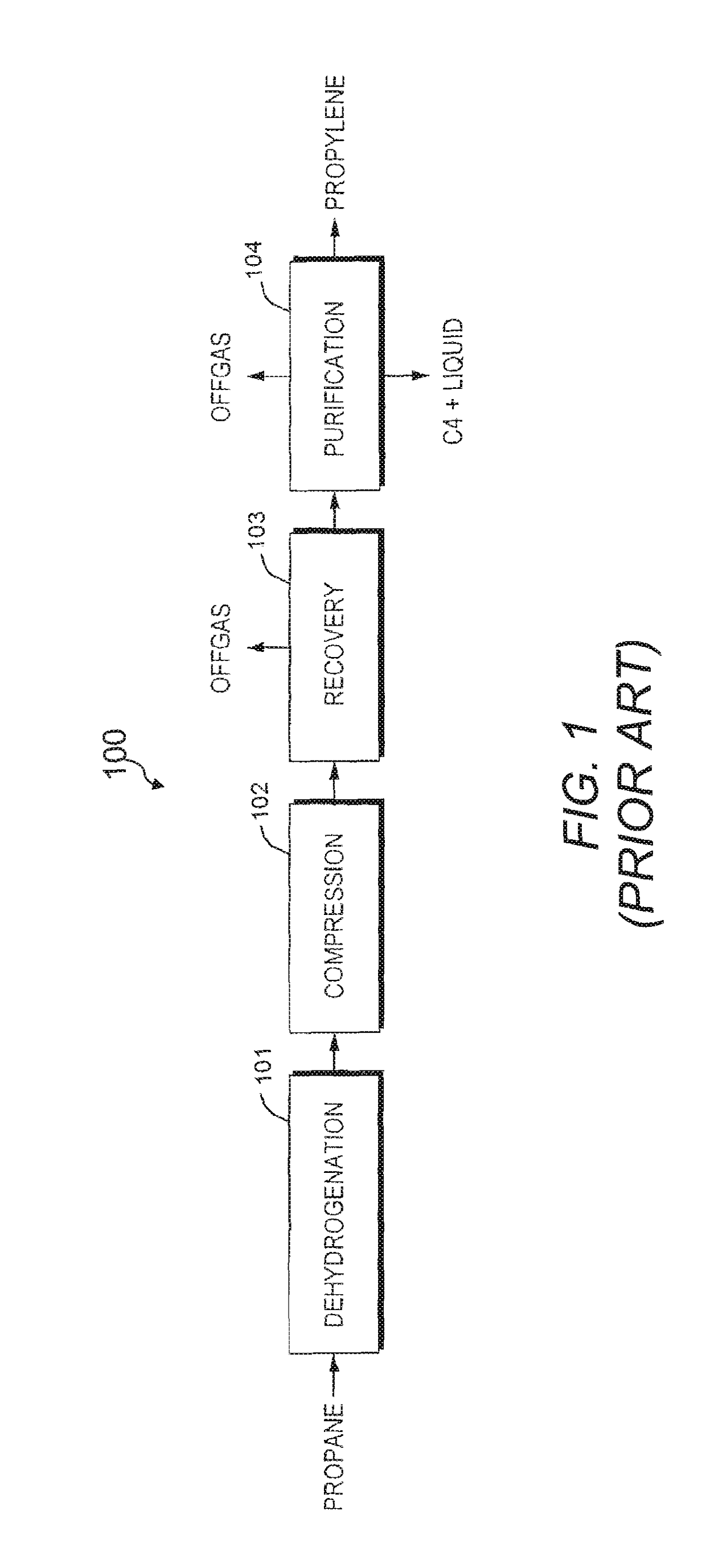Method for improving propane dehydrogenation process
a propane dehydrogenation and process technology, applied in the direction of hydrocarbons, catalysts, hydrocarbon preparations, etc., can solve the problems of significant reduction of propylene production, cracked and/or dehydrogenated, and inability to recover propylene slip streams, etc., to improve catalyst life cycle, prevent excessive temperature and pressure, and save operation
- Summary
- Abstract
- Description
- Claims
- Application Information
AI Technical Summary
Benefits of technology
Problems solved by technology
Method used
Image
Examples
example
[0085]The following paragraphs describe a simulated MAPD hydrogenation process where all hydrogenation catalysts are at their Start of Run (SOR). It is to be understood that this simulated MAPD hydrogenation process is included herein as an example for strictly illustrative purpose, and is not intended to limit the scope of the invention.
[0086]A flow of 170 MT / h is fed from the desulfurization unit at a C3 Catofin process, to the MAPD hydrogenation process scheme of FIG. 3. The main compounds of the stream include 0.037500% w / w of methyl acetylene or propyne, 0.017500% w / w of propadiene, 38.360000 w / w % of propylene, and 57.405000 w / w % of propane, and further detailed in Table 1.
[0087]Once the feed stream 412 enters the hydrogenation reactor system 450, the operating conditions of the stream are increased in pressure and temperature up to the ranges previously defined herein. The feed stream 412 is infused with hydrogen when a stream of pure hydrogen is fed and mixed with the strea...
PUM
| Property | Measurement | Unit |
|---|---|---|
| Temperature | aaaaa | aaaaa |
| Temperature | aaaaa | aaaaa |
| Fraction | aaaaa | aaaaa |
Abstract
Description
Claims
Application Information
 Login to View More
Login to View More - R&D
- Intellectual Property
- Life Sciences
- Materials
- Tech Scout
- Unparalleled Data Quality
- Higher Quality Content
- 60% Fewer Hallucinations
Browse by: Latest US Patents, China's latest patents, Technical Efficacy Thesaurus, Application Domain, Technology Topic, Popular Technical Reports.
© 2025 PatSnap. All rights reserved.Legal|Privacy policy|Modern Slavery Act Transparency Statement|Sitemap|About US| Contact US: help@patsnap.com



